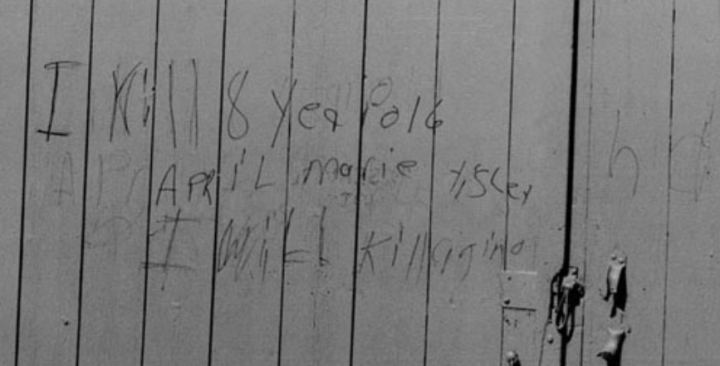WARNING: This story contains graphic details.

Eight-year-old April Tinsley was kidnapped on April 1, 1988. Three days later, her body was found in a ditch by a jogger.
Indiana police reports from the 30-year-old murder found that the first-grader had been sexually assaulted and suffocated, according to a police affidavit.
Two years after the murder, police found a note on a barn close to where her body was found in DeKalb County.
“I kill 8 year old April M Tinsley did you find the other shoe haha I will kill again,” it read.
WATCH: How DNA testing solved the April Tinsley murder

In 2004, the suspect sent notes to other young girls in the region, some with used condoms and nude photographs.
WATCH: ‘Thank God we finally got him’: April Tinsley’s aunt reacts to arrest in 30-year-old cold case

DNA from the condoms matched traces found on Tinsley’s underwear.
Tinsley’s death became a well-known cold case in the United States in the months and years following her death.

Get breaking National news
In 2009 and again in 2012, it was covered by TV show “America’s Most Wanted.” It was also the focus of several online true-crime bloggers.
FBI fielded dozens of tips surrounding the case, while investigators moved from one potential suspect to the next.
Now — 30 years later — police announced an arrest on Sunday.
WATCH: What is the DNA process for solving cold-case crimes?

The Fort Wayne Police Department and the Indiana State Police arrested 59-year-old John D. Miller in the cold case.
The affidavit shows that the arrest was made after DNA testing, which was arranged by Det. Brian Martin earlier this year.
Investigators sent DNA recovered from the Tinsley case to the Parabon Nanolabs. The lab used its public genealogy databases to flag two possible suspects — brothers.
That led police to a trailer park in Grabill, Indiana, where they found used condoms in a garbage outside Miller’s home. They ran tests, and found the DNA matched samples obtained by police in the 2004 letter.]
Detectives then detained and questioned Miller, explaining that his DNA was a match in the case.
Upon pressing, Miller admitted that he kidnapped the eight-year-old and later killed her so she would not report him to police.
Miller now faces charges of murder, child molestation and criminal confinement.
Using DNA testing to solve cold cases
DNA testing has been used to solve several cold cases in the past few months alone.
In April, DNA testing led to the arrest of “Golden State Killer” Joseph James DeAngelo, who is suspected to have raped and murdered several victims in California in the 1970s.
READ MORE: California investigators used DNA from genealogy website to find Golden State Killer
WATCH: DNA from genealogy website led to Golden State Killer suspect

In May, Los Angeles police made an arrest in the 1977 rape and murder of a mother using DNA matching.
The process, known as genetic genealogy, has led to some privacy and ethics concerns.
Individuals whose data is uploaded to the website may not necessarily know that it was saved, or what purpose it is being used for.










Comments